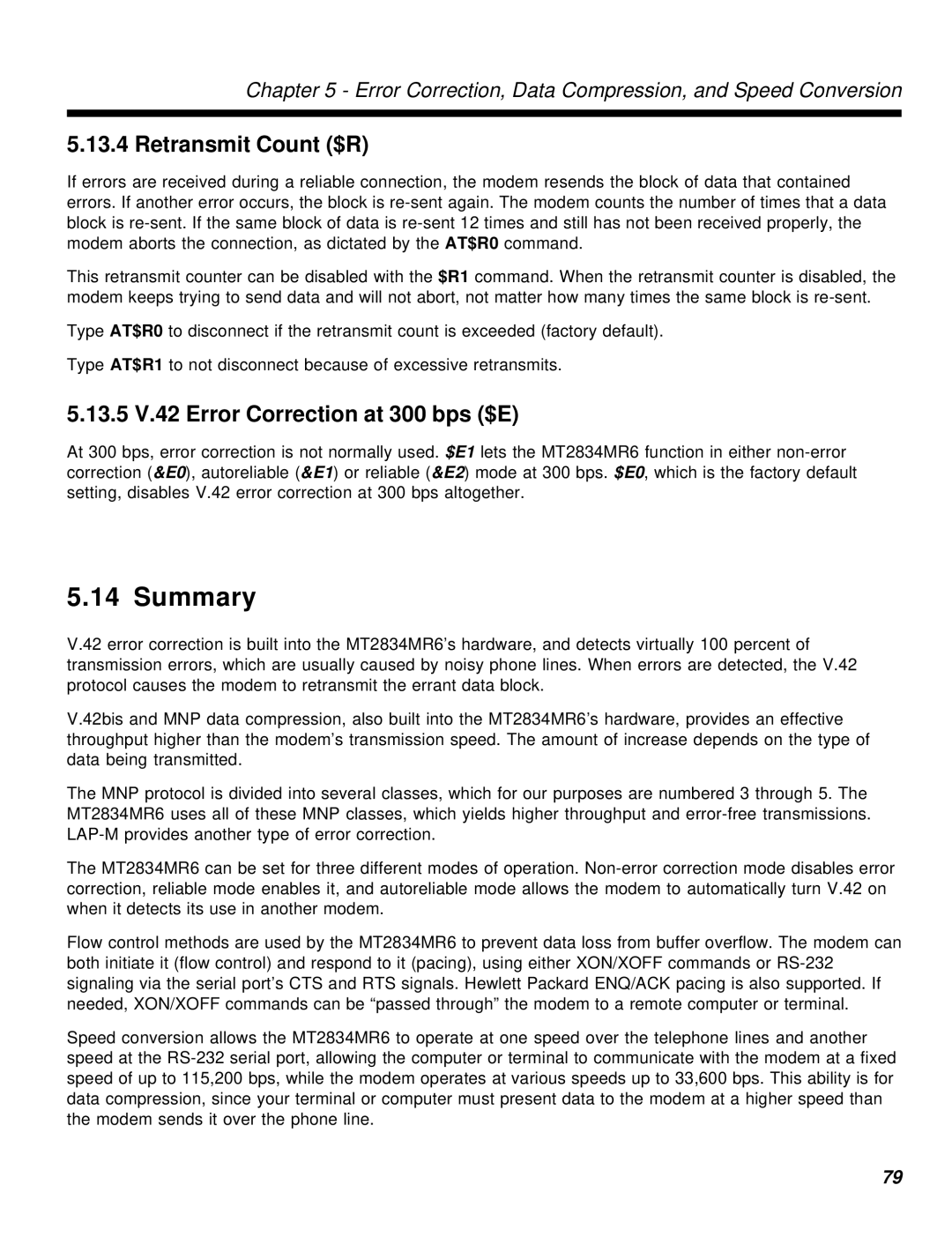Chapter 5 - Error Correction, Data Compression, and Speed Conversion
5.13.4 Retransmit Count ($R)
If errors are received during a reliable connection, the modem resends the block of data that contained errors. If another error occurs, the block is
This retransmit counter can be disabled with the $R1 command. When the retransmit counter is disabled, the modem keeps trying to send data and will not abort, not matter how many times the same block is
Type AT$R0 to disconnect if the retransmit count is exceeded (factory default).
Type AT$R1 to not disconnect because of excessive retransmits.
5.13.5 V.42 Error Correction at 300 bps ($E)
At 300 bps, error correction is not normally used. $E1 lets the MT2834MR6 function in either
5.14 Summary
V.42 error correction is built into the MT2834MR6’s hardware, and detects virtually 100 percent of transmission errors, which are usually caused by noisy phone lines. When errors are detected, the V.42 protocol causes the modem to retransmit the errant data block.
V.42bis and MNP data compression, also built into the MT2834MR6’s hardware, provides an effective throughput higher than the modem’s transmission speed. The amount of increase depends on the type of data being transmitted.
The MNP protocol is divided into several classes, which for our purposes are numbered 3 through 5. The MT2834MR6 uses all of these MNP classes, which yields higher throughput and
The MT2834MR6 can be set for three different modes of operation.
Flow control methods are used by the MT2834MR6 to prevent data loss from buffer overflow. The modem can both initiate it (flow control) and respond to it (pacing), using either XON/XOFF commands or
Speed conversion allows the MT2834MR6 to operate at one speed over the telephone lines and another speed at the
79
